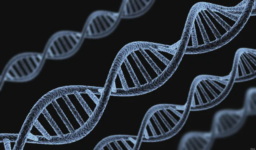

Differentially Coexpresse... (2016)
by Xue Jiang


Two rank lists of gene differential coexpressions were obtained by conducting gene differential coexpression analysis based on DCGN-I and DCGN-S with k=1, respectively. Two rank lists of gene differential expression were obtained by conducting gene differential expression analysis based on RPFC and RP-t, respectively. It needs to be noted that the high ranking of a gene in the rank list represents high probability of being a disease-related gene. We analyzed the distribution of rankings of disease-related genes in the training set, and the results are shown in Figure 8. From Figure 8, it can beseen that the average ranking of disease genes in training set by using DCGN-I is much higher than that by using other methods. From Table 5, the average degree of each gene coexpression network is in the range of [190, 310], indicating that there are dense connections in those networks. For networks with such feature, DCGN-I is more suitable than DCGN-S for analyzing those networks. Experimental results also show that the effectiveness of DCGN-I is much better compared to DCGN-S. In total, by analyzing local topological structures of gene coexpression networks, DCGN-I can screen differentially coexpressed genes. Compared with traditional differentially expressed gene identification methods, DCGN-I can effectively improve the accuracy of disease-related genes selection. 3.6. A Case Study. In order to analyze the characters of gene differential coexpression by using different measures, we conducted a case analysis in this subsection. Figure 9 illustrated the topological structure changes of a node, which has a larger degree in comparison with the node in Figure 10, from network W1 to network W2. Figure 10 showed the topological structure changes of a node with small degree from network W1 to network W2.🏁
Global Leaderboard
| # | Player | Time | Duration | Accuracy | WPM | pp | |
|---|---|---|---|---|---|---|---|
| 1 | |||||||
| 2 | |||||||
| 3 | |||||||
| 4 | |||||||
| 5 | |||||||
| 6 | |||||||
| 7 | |||||||
| 8 | |||||||
| 9 | |||||||
| 10 |


Two rank lists of gene differential coexpressions were obtained by conducting gene differential coexpression analysis based on DCGN-I and DCGN-S with k=1, respectively. Two rank lists of gene differential expression were obtained by conducting gene differential expression analysis based on RPFC and RP-t, respectively. It needs to be noted that the high ranking of a gene in the rank list represents high probability of being a disease-related gene. We analyzed the distribution of rankings of disease-related genes in the training set, and the results are shown in Figure 8. From Figure 8, it can beseen that the average ranking of disease genes in training set by using DCGN-I is much higher than that by using other methods. From Table 5, the average degree of each gene coexpression network is in the range of [190, 310], indicating that there are dense connections in those networks. For networks with such feature, DCGN-I is more suitable than DCGN-S for analyzing those networks. Experimental results also show that the effectiveness of DCGN-I is much better compared to DCGN-S. In total, by analyzing local topological structures of gene coexpression networks, DCGN-I can screen differentially coexpressed genes. Compared with traditional differentially expressed gene identification methods, DCGN-I can effectively improve the accuracy of disease-related genes selection. 3.6. A Case Study. In order to analyze the characters of gene differential coexpression by using different measures, we conducted a case analysis in this subsection. Figure 9 illustrated the topological structure changes of a node, which has a larger degree in comparison with the node in Figure 10, from network W1 to network W2. Figure 10 showed the topological structure changes of a node with small degree from network W1 to network W2.🏁